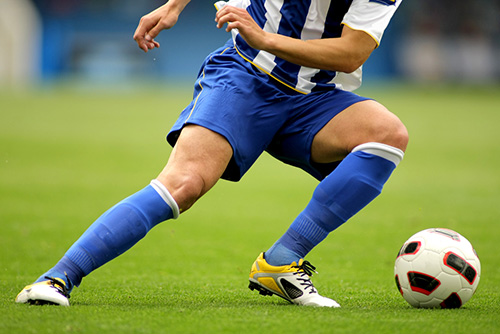In the U.S., about 30 million children and teens participate in some form of organized sports and more than 3.5 million injuries occur each year. As an athlete, you may have probably heard “shake it off”, “tough it out”, or “rub some dirt on it” more times than you can count. Oftentimes athletes feel the pressure to perform and to have a warrior mentality, so they choose to play through the pain and keep their injuries hidden.

Here are some surprising stats regarding injuries from At Your Own Risk:
- 90% of student athletes report some sort of sports-related injury
- 54% of student athletes report they have played while injured
- 12% report they have sustained concussions and head injuries from their time on the field
- Between 2008 and 2015, more than 300 sports-related deaths of young athletes occurred in America alone
- According to the CDC, more than half of all sports injuries in children are preventable
From Tiger Woods’ torn ACL and fractured leg to Curt Schilling’s damaged ankle, we’ve all seen professional athletes “suck it up.” Unfortunately, these injuries lead to greater consequences than just losing a game. So when is enough enough?
Consequences of Playing Through an Injury
Worsening Injuries
The most common sports injuries are sprains and strains, but once you keep playing on them, you’ll cause more damage. Small fractures can turn into greater fractures and more serious conditions. Minor concussions can lead to severe brain damage.
Playing With Poor Form or Posture
Instead of taking time to recover, an athlete might try to push through the pain. They’ll likely have to change their form or posture and use a different group of muscles to compensate. This can cause chronic harm because it’s not your body’s natural form of movement.
Building Tolerance to Pain
Whether you’re staying in the game or taking pain killers, pushing through the pain means that you are building a higher pain tolerance, which is not necessarily a good thing. If you don’t notice the pain, you don’t know when to stop and can push your body to its breaking point.
More Invasive Treatment or Longer Recovery
Once you determine that the pain is too much and receive treatment, the condition will have most likely worsened since it first began. The treatment options may be more invasive like surgery or physical therapy. All in all, it will take up more of your time and keep the athlete out of the game.
Tips for Athletes
Stop Playing If You’re Hurt
If you’re hurting, stop playing and go to the doctor as soon as possible. Your doctor can give you advice on how to treat the injury and for how long to rest. Don’t play until the doctor clears you.
Condition Your Body
As sports medicine providers, we find it very important to condition your body to help prevent unwanted injuries in the upcoming season. Jumping into the season headfirst without any training or conditioning will most likely leave you exhausted and in pain. Talk with your coach or athletic trainer to help pinpoint what areas are your strengths and weaknesses and find workouts that will improve those skills.
Closing Thoughts
No matter your playing level, you should always keep in mind that catching an injury early means a better chance at a full and quick recovery. At Prairie Orthopaedic, we specialize in sports medicine and physical therapy, which means we can properly assess your injury and find the best treatment for you so that you can return to the game you love.

